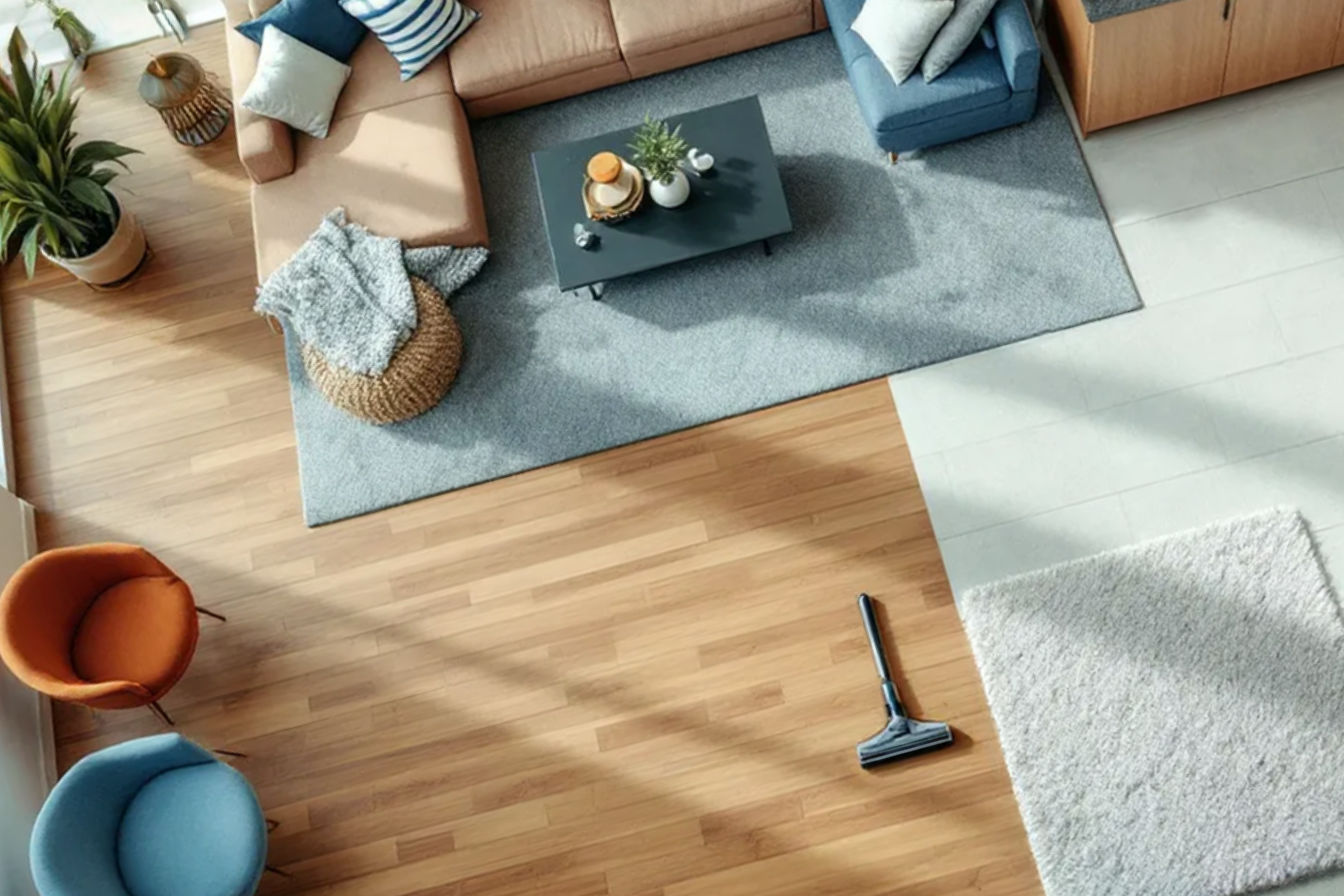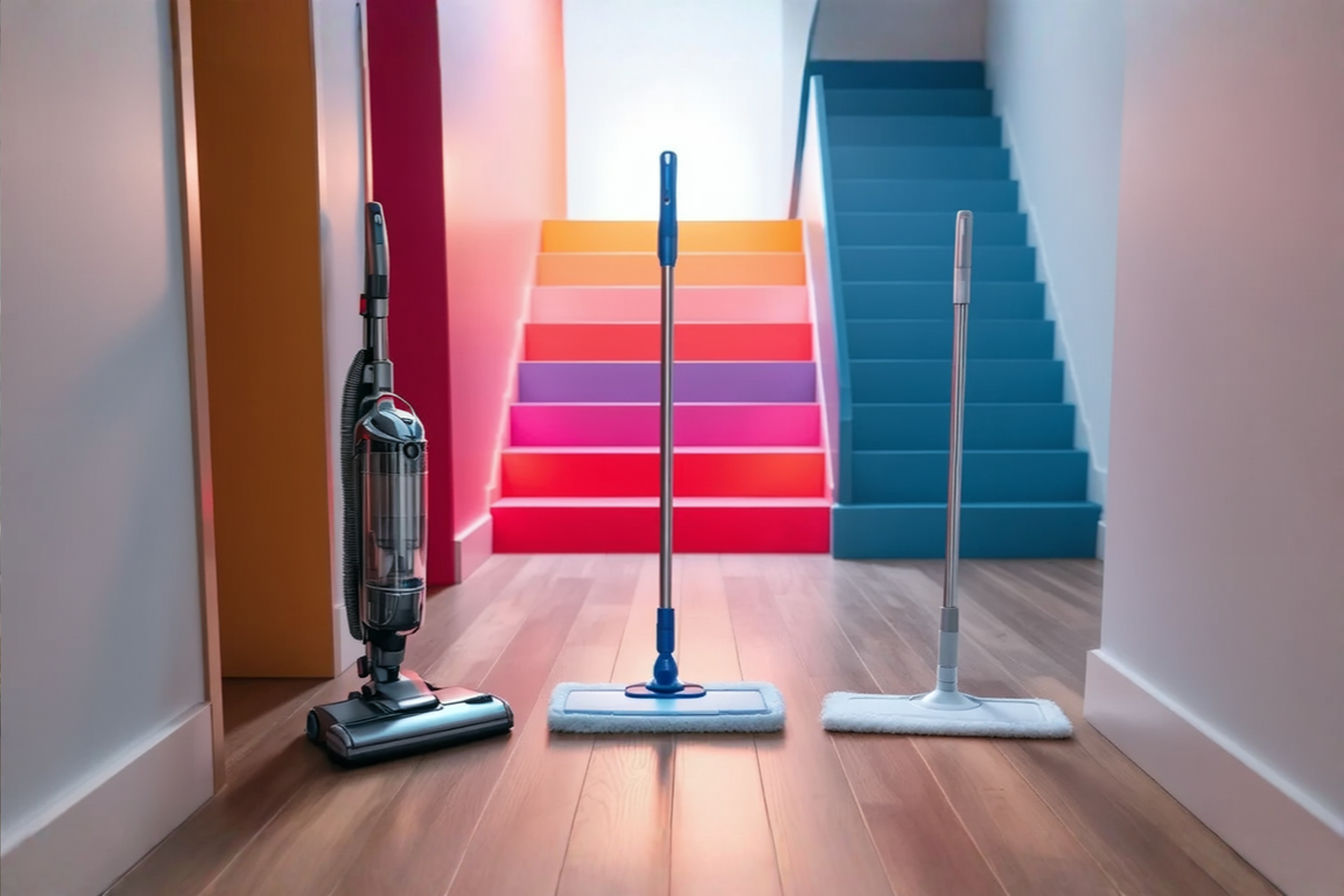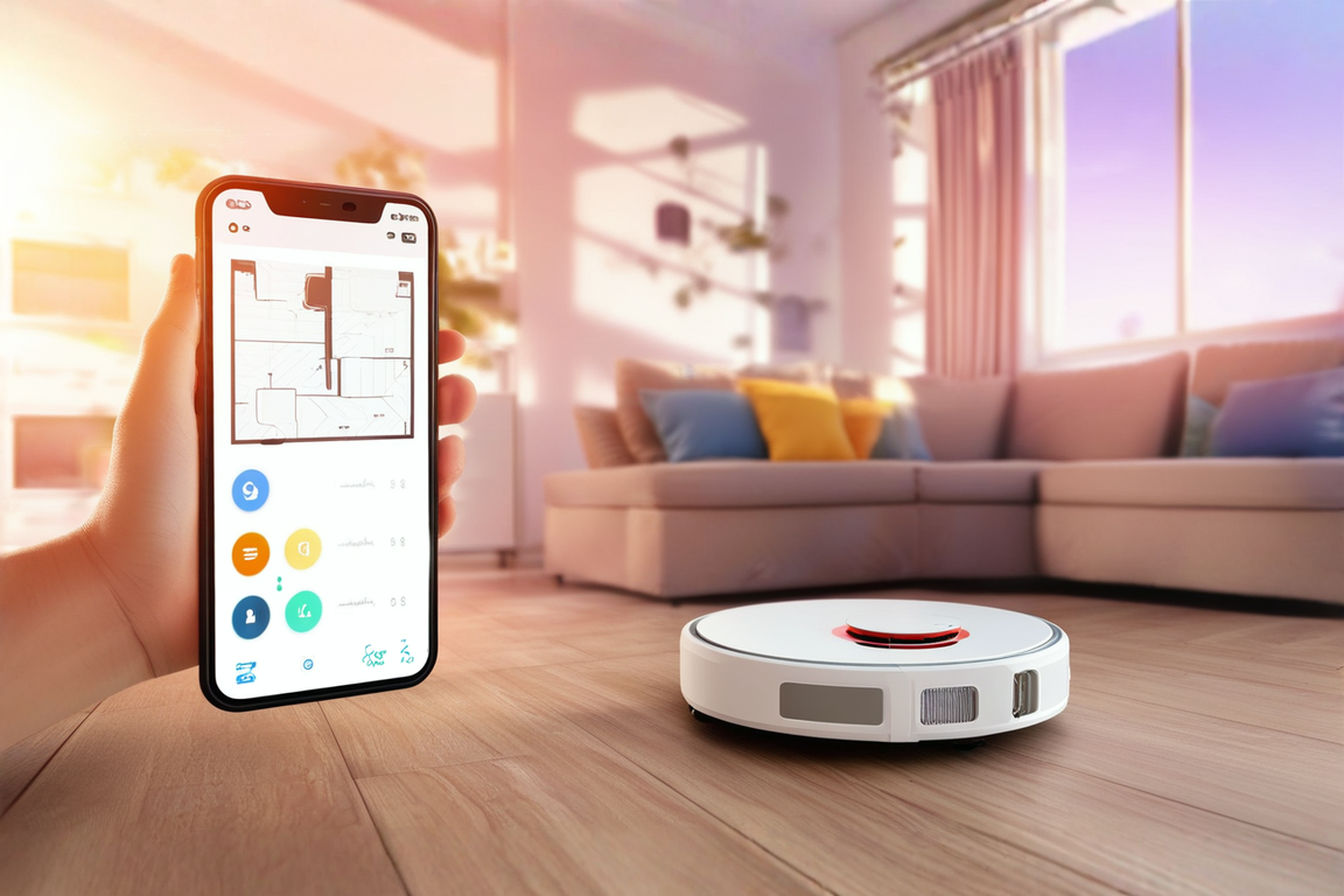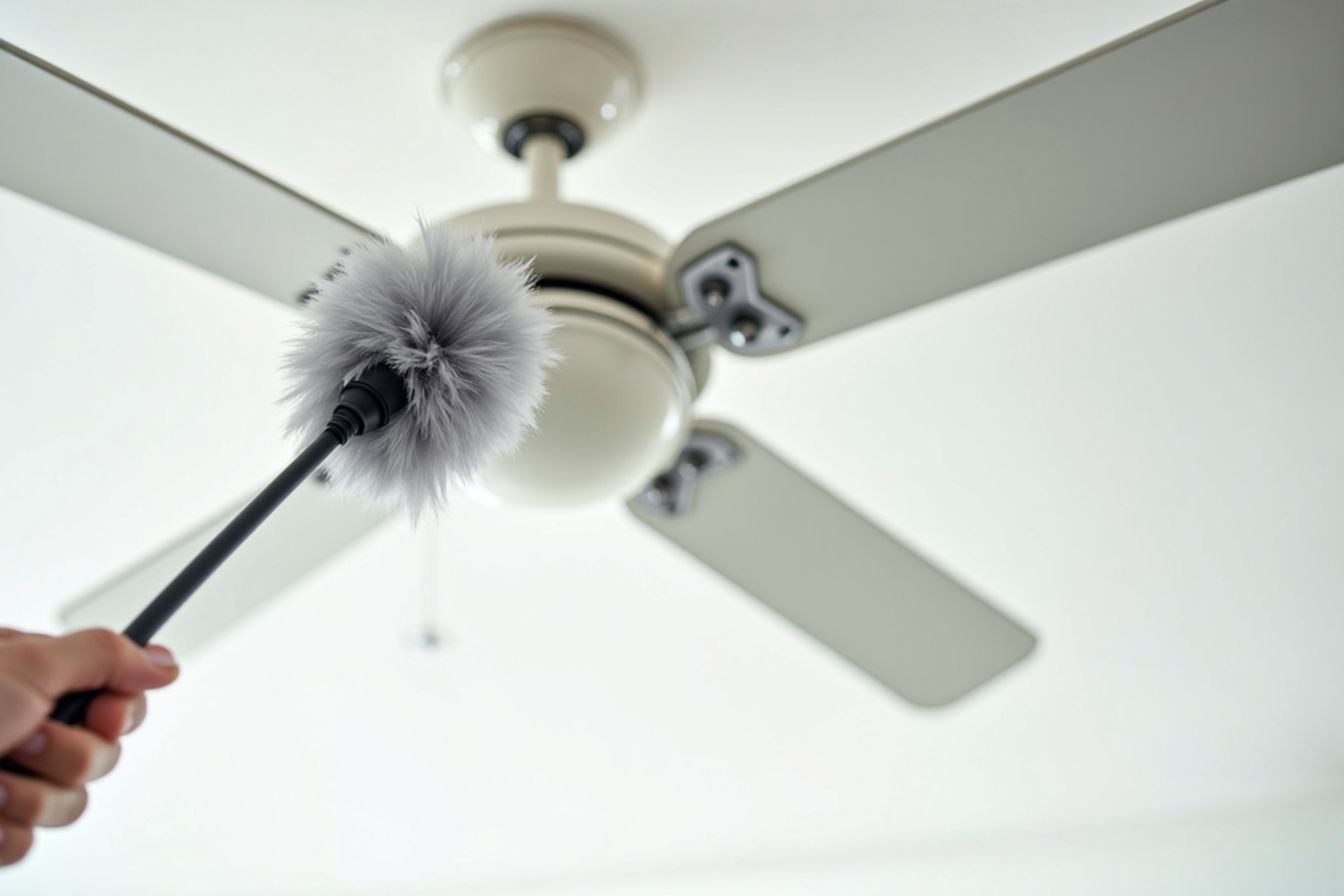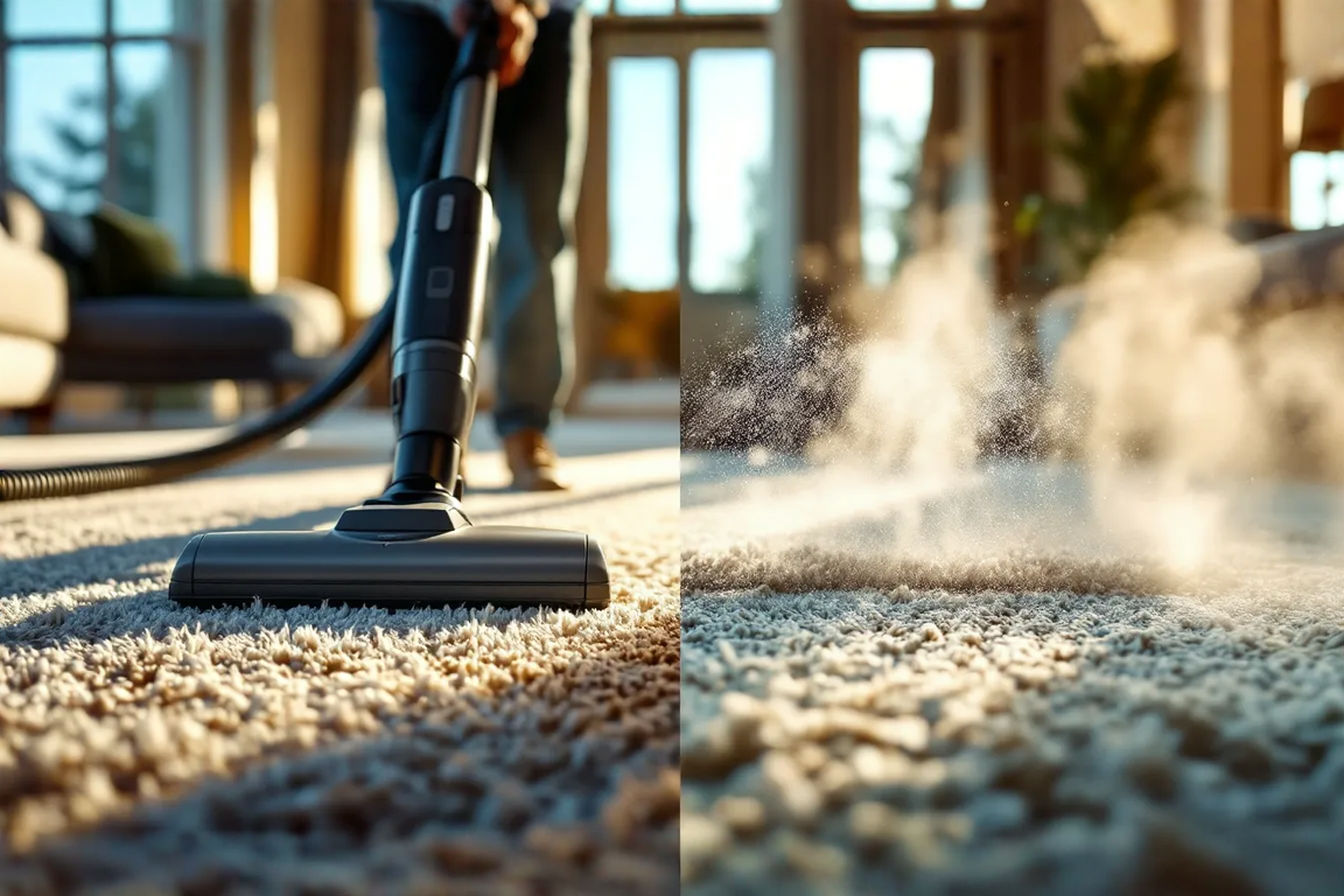Multi-Floor Home Strategy: The Ultimate Guide to Vacuum Selection for Homes with Diverse Surfaces
Finding one vacuum that works well on hardwood, carpet, and tile can be challenging. This guide helps you choose the right cleaning solution for homes with multiple floor types.
This post may contain affiliate links. If you make a purchase through these links, we may earn a commission at no additional cost to you.
Keeping a home clean becomes twice as challenging when you have different types of floors throughout your house. You might find yourself wondering if one vacuum can handle plush carpet, delicate hardwood, and everything in between. Many homeowners struggle with this exact problem, often using the wrong tools that either damage their floors or leave dirt behind.
This guide will help you navigate the world of vacuum cleaners for homes with multiple floor types. We’ll look at what features matter most when cleaning different surfaces and how to pick a vacuum that works well throughout your entire home. Whether you live in a two-story house with hardwood and carpet or a multi-level apartment with tile and area rugs, you’ll find practical advice to make cleaning easier and more effective.
Understanding Multi-Floor Home Cleaning Challenges
Different Floor Surfaces and Their Unique Needs
Each floor type in your home needs special care. Hardwood floors scratch easily but only need gentle suction to remove dust and debris. Carpets, on the other hand, trap dirt deep within their fibers and require strong suction and brush action to clean properly. Tile floors with grout lines create spaces where dirt can hide, while laminate needs moderate suction without excess moisture.
When you mix these surfaces throughout your home, cleaning becomes more complex. Using the wrong vacuum setting on a delicate floor can cause damage that’s expensive to repair. A vacuum that works perfectly on your living room carpet might scratch your kitchen’s hardwood or fail to clean your bathroom’s tile effectively.
The Multi-Level Challenge
Moving between floors adds another layer of difficulty. Carrying a heavy vacuum up and down stairs isn’t just tiring—it can be dangerous. Cords that don’t reach far enough force you to unplug and replug as you move, making cleaning take much longer than it should.
Storage also becomes an issue in multi-floor homes. Do you keep one vacuum on each floor? Do you store a single unit centrally? These practical questions affect which vacuum will work best for your specific living situation.
Time and Efficiency Concerns
Nobody wants to spend their entire weekend cleaning. With multiple floor types, you might find yourself switching vacuum heads or adjusting settings constantly. This eats up time and makes cleaning feel like an endless chore. The ideal vacuum solution should help you clean all your floors quickly without sacrificing quality.
Types of Vacuums for Multi-Floor Homes
Upright Vacuums
Upright vacuums stand tall and push forward easily, making them popular for many households. They excel at cleaning carpets due to their strong suction and direct brush contact. Most modern uprights include settings for different floor types, allowing you to switch between carpet and hard floor modes.
The drawbacks? They tend to be heavier, making them challenging to carry up stairs. Their design also makes them less flexible for cleaning under furniture or in tight spaces. If your home has mainly carpets with some hard floors, an upright with floor-type settings might work well for you.
Canister Vacuums
Canister vacuums separate the motor unit from the cleaning head, connecting them with a flexible hose. This design makes them more versatile for different surfaces. You can easily swap cleaning heads as you move from carpet to hardwood to tile.
These vacuums often provide excellent suction power while being quieter than uprights. The separate canister follows behind as you clean, which some people find easier to maneuver. However, pulling the canister up stairs can be awkward, and they require more storage space than some other options.
Stick and Cordless Vacuums
Stick vacuums have transformed home cleaning in recent years. These lightweight, often cordless options make moving between floors simple. Modern stick vacuums offer impressive power despite their small size, with battery life typically ranging from 20 to 60 minutes depending on the model and settings.
Their greatest strength for multi-floor homes is portability. You can easily carry them upstairs, and without a cord, you won’t need to search for outlets as you move between rooms. Many convert to handheld units for cleaning stairs, furniture, and tight spaces. The tradeoff comes in suction power and dust capacity, though premium models have narrowed this gap significantly.
Robot Vacuums
Robot vacuums offer a hands-free approach to floor cleaning. They excel at maintenance cleaning, picking up daily dust and debris while you focus on other tasks. Advanced models can map your home, recognize different floor types, and adjust their cleaning approach accordingly.
For multi-floor homes, robots have both advantages and limitations. You’ll need to either move the robot between floors or invest in multiple units. Most can handle transitions between hard floors and low-pile carpets, but struggle with high-pile carpeting. They work best as part of a cleaning system rather than a complete solution.
Handheld Vacuums
Handheld vacuums serve as excellent companions to your main vacuum. These small, portable units clean stairs, furniture, car interiors, and other hard-to-reach spots. While not suitable as your primary vacuum, they complement other types perfectly for multi-floor homes.
Modern handheld units offer surprising power in compact packages. Many cordless stick vacuums convert to handheld mode, giving you two tools in one and saving storage space.
Wet/Dry Vacuums
Homes with a mix of hard floors might benefit from wet/dry vacuum options. These specialized cleaners can handle both dry debris and spills, making them versatile for kitchens, bathrooms, and entryways.
Wet/dry vacuums range from full-size shop vacs to sleek home models designed for everyday use. Some newer robots and upright vacuums include mopping features, allowing them to vacuum and wash hard floors in one pass.
Essential Features for Multi-Floor Vacuum Cleaners
Adjustable Suction Power
The ability to control suction power ranks among the most important features for multi-floor vacuums. High suction works well for deep-cleaning carpets but can cause problems on delicate surfaces. Look for vacuums with easily adjustable power settings that you can change as you move between rooms.
Many premium vacuums now include automatic surface detection, adjusting suction power based on the floor type. This feature saves time and protects your floors without requiring manual adjustments.
Brush Roll Control
The rotating brush that helps clean carpets can scratch hardwood and scatter debris on hard surfaces. A vacuum with brush roll control lets you turn this feature off when cleaning delicate floors. Some advanced models adjust brush speed and height automatically based on the surface.
This seemingly small feature makes a huge difference in cleaning quality and floor protection. Without it, you might find yourself buying separate vacuums for different floor types.
Weight and Portability
In multi-level homes, vacuum weight becomes especially important. Carrying a heavy cleaner up and down stairs quickly becomes tiresome. Lightweight options (under 10 pounds) make cleaning multiple floors much easier.
Consider features like swivel steering and ergonomic handles that reduce strain during use. Cordless models eliminate the hassle of managing cords as you move between rooms and floors.
Cord Length vs. Battery Life
For corded vacuums, look for models with cords of at least 25-30 feet. This length allows you to clean large areas without constantly searching for new outlets. Retractable cords offer convenience and prevent tripping hazards during storage.
If you choose cordless, battery life becomes crucial. Entry-level models might run for only 15-20 minutes, while premium options can clean for an hour or more. Some include removable batteries, allowing you to swap in a fresh one for extended cleaning sessions.
Attachments and Versatility
A vacuum’s included tools greatly expand its capabilities across different surfaces. Crevice tools reach tight corners, upholstery attachments clean furniture, and dusting brushes handle delicate items. For homes with diverse flooring, look for:
- Hard floor attachments with soft bristles
- Specialized tools for different carpet heights
- Motorized mini-brushes for stairs
- Extension wands for high reaches
- Corner cleaners for baseboards
The best multi-floor vacuums include storage solutions for these attachments, either onboard the vacuum itself or in a separate caddy.
Filtration Systems
Good filtration matters in any home but becomes even more important if you have family members with allergies or asthma. HEPA filters capture tiny particles that other filters miss, improving your home’s air quality as you clean.
Some vacuums feature multi-stage filtration that removes progressively smaller particles. Sealed systems prevent dust from escaping through cracks in the vacuum housing. For homes with pets, specialized filters that trap dander and control odors provide additional benefits.
Best Vacuum Options for Specific Floor Combinations
Hardwood and Area Rugs
Homes with mostly hardwood floors and area rugs need gentle yet effective cleaning. Canister vacuums with specialized hard floor attachments often work best for this combination. Look for rubber wheels that won’t scratch wood and soft bristles that can clean effectively without causing damage.
Cordless stick vacuums also excel in these environments. Their lightweight design and easy maneuverability make them perfect for cleaning around and under furniture. Many include settings specifically designed for area rugs, increasing suction and brush action temporarily as you move onto the rug.
Carpet and Tile
When your home features a mix of carpets and tile floors, strong suction and brush roll control become essential. Upright vacuums generally perform well on carpets but look for models with a brush roll on/off switch for when you move to tile areas.
Tile floors, especially those with deep grout lines, benefit from specialized attachments. Some vacuums include hard floor tools with microfiber pads that catch dust in grout crevices. For homes with mainly carpet and some tile, consider a quality upright with good attachments.
Mixed Flooring with Pets
Pet owners face extra challenges with hair, dander, and tracked litter across multiple floor types. For these homes, specialized pet vacuums offer features like tangle-free brush rolls, improved filtration, and tools designed specifically for pet hair.
Stick vacuums with high-torque brush heads often handle pet hair better than traditional designs. Look for models that seal in allergens and include mini-motorized tools for cleaning pet beds and furniture. Homes with pets might benefit from a robot vacuum for daily maintenance plus a more powerful model for weekly deep cleaning.
Homes with Stairs and Multiple Levels
Stairs present unique cleaning challenges in multi-level homes. The ideal vacuum for this situation would be lightweight, easily carried, and effective on stair surfaces. Cordless stick vacuums that convert to handheld units shine in these environments.
Some homeowners find that two complementary vacuums work better than trying to find one perfect solution. A robot vacuum that handles daily cleaning on the main floor paired with a lightweight cordless for stairs and upper levels often provides the best results with the least effort.
Smart Multi-Floor Cleaning Strategies
Single Powerful Vacuum vs. Multiple Specialized Units
Should you buy one versatile vacuum or several specialized ones? The answer depends on your home’s layout and your cleaning preferences. A single high-quality vacuum with the right features can handle multiple floor types effectively. This approach costs less initially and requires less storage space.
However, keeping different vacuums for different areas sometimes makes sense. Many homeowners find that a robot vacuum for daily maintenance combined with a more powerful traditional vacuum for weekly deep cleaning provides the best results.
Floor-Specific Accessories
Even if you choose a single vacuum, having the right attachments for each floor type makes cleaning more effective. Invest in quality accessories designed for your specific floors. Some manufacturers sell specialized tools separately that significantly improve cleaning performance.
Keep these accessories organized and easily accessible. A wall-mounted storage system near your vacuum’s charging station can save time and prevent lost attachments.
Cleaning Routines for Different Surfaces
Developing a cleaning schedule that accounts for different floor types improves efficiency. Hard surfaces like tile and hardwood generally need more frequent but less intensive cleaning. Carpets require less frequent but more thorough attention.
Consider cleaning hard surfaces twice weekly with a quick pass, while deep-cleaning carpets once a week. This approach maintains cleanliness while focusing your effort where it matters most.
Maintenance Tips for Vacuum Longevity
A well-maintained vacuum lasts longer and performs better across all floor types. Empty dust bins or replace bags when they’re 2/3 full, not when completely full. Clean or replace filters according to the manufacturer’s schedule, usually every 3-6 months.
Check brush rolls regularly for hair and thread tangles, cutting away any buildup. Wipe down the exterior and check for clogs in hoses and attachments. These simple maintenance steps keep your vacuum working effectively on all surfaces.
Budget Considerations for Multi-Floor Vacuum Solutions
Entry-Level Options
You don’t need to spend a fortune to clean multiple floor types effectively. Quality entry-level vacuums with basic multi-floor features start around $100-150. At this price point, look for:
- Adjustable height settings for different carpets
- Basic brush roll on/off function
- A few essential attachments
- Adequate filtration
These models may lack advanced features but can still clean different surfaces effectively with some manual adjustment.
Mid-Range Investments
The $200-400 range offers significantly better performance and convenience for multi-floor homes. Vacuums in this category typically include:
- More powerful motors with adjustable suction
- Better filtration systems
- More comprehensive attachment sets
- Improved build quality for longer lifespan
- Enhanced features for specific floor types
Most homeowners find the best value in this mid-range category, with vacuums that balance performance, features, and longevity.
Premium Solutions
High-end vacuums ($400+) offer advanced features that make cleaning multiple floors nearly effortless. These might include:
- Automatic surface detection and adjustment
- Digital motors with exceptional suction power
- HEPA filtration with completely sealed systems
- Extended warranties and better customer support
- Advanced design for easier use and maintenance
While expensive, these premium options often last many years longer than budget models, potentially offering better long-term value.
Long-Term Cost Analysis
When considering vacuum options, look beyond the initial price tag. A $300 vacuum that lasts eight years costs less over time than a $100 model that needs replacement every two years. Factor in replacement filters, bags (if applicable), and potential repairs.
Some manufacturers offer comprehensive warranty programs that cover both parts and labor for extended periods. These warranties add value, especially for homes that clean frequently across different floor types.
Future Trends in Multi-Floor Vacuum Technology
AI and Mapping Capabilities
Artificial intelligence is transforming how vacuums handle multiple floor types. Advanced robots now create detailed maps of your home, identifying different floor surfaces and remembering which areas need special treatment. This technology continues to improve each year, making robot vacuums increasingly viable for complex homes.
Even traditional vacuums have begun incorporating smart sensors that detect surface changes and adjust settings automatically. This trend will likely accelerate, making manual adjustments between floor types obsolete.
Multi-Surface Detection
Newer vacuum models can recognize the difference between hardwood, tile, carpet, and other surfaces. This detection happens in real-time, allowing the vacuum to adjust suction power, brush roll speed, and height instantly as you move across different floors.
This technology currently appears in premium models but will likely become standard in mid-range vacuums within the next few years. It significantly improves cleaning performance while protecting delicate floors from damage.
Automated Floor-Type Adjustment
Beyond simply detecting different surfaces, advanced vacuums now automatically change their cleaning approach for each floor type. Motors adjust power, brush rolls change speed or lift away completely, and even the airflow pattern may shift to optimize cleaning.
These systems remove the need for manual adjustments, making cleaning faster and more effective. They also prevent user error that might damage floors or reduce cleaning efficiency.
Integration with Smart Home Systems
Vacuum cleaners increasingly connect to home automation systems, allowing coordinated cleaning based on your schedule and needs. Voice commands through assistants like Alexa or Google Home can trigger specific cleaning modes for different rooms or floor types.
Some systems even communicate with other smart devices. Your vacuum might know when you’ve left for work or gone to bed, adjusting its cleaning schedule accordingly. This integration makes maintaining multiple floor types easier than ever before.
Conclusion
Choosing the right vacuum for a home with diverse floor surfaces doesn’t have to be overwhelming. By understanding your specific needs and the features that matter most, you can find a cleaning solution that works throughout your entire home.
Whether you opt for a versatile all-in-one vacuum with multiple settings or a combination of specialized tools, the key lies in matching the technology to your home’s unique requirements. Consider your floor types, home layout, budget, and cleaning preferences when making your decision.
Remember that the best vacuum is one that you’ll actually use regularly. Even the most advanced cleaner won’t help if it’s too heavy, too complicated, or too inconvenient for your lifestyle. Focus on finding a balance between performance, convenience, and value that works for your specific situation.
With the right vacuum strategy, you can maintain beautiful, clean floors throughout your multi-level home—saving time, protecting your investment, and enjoying a healthier living environment for years to come.

